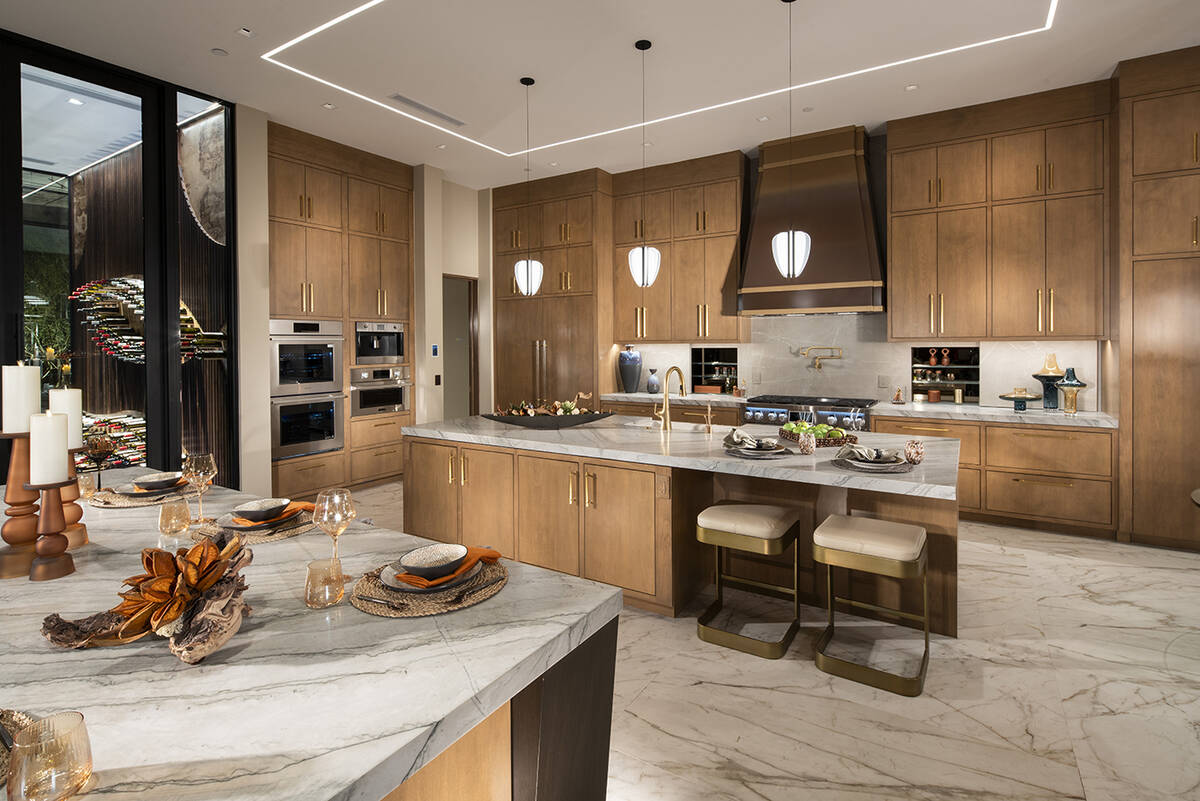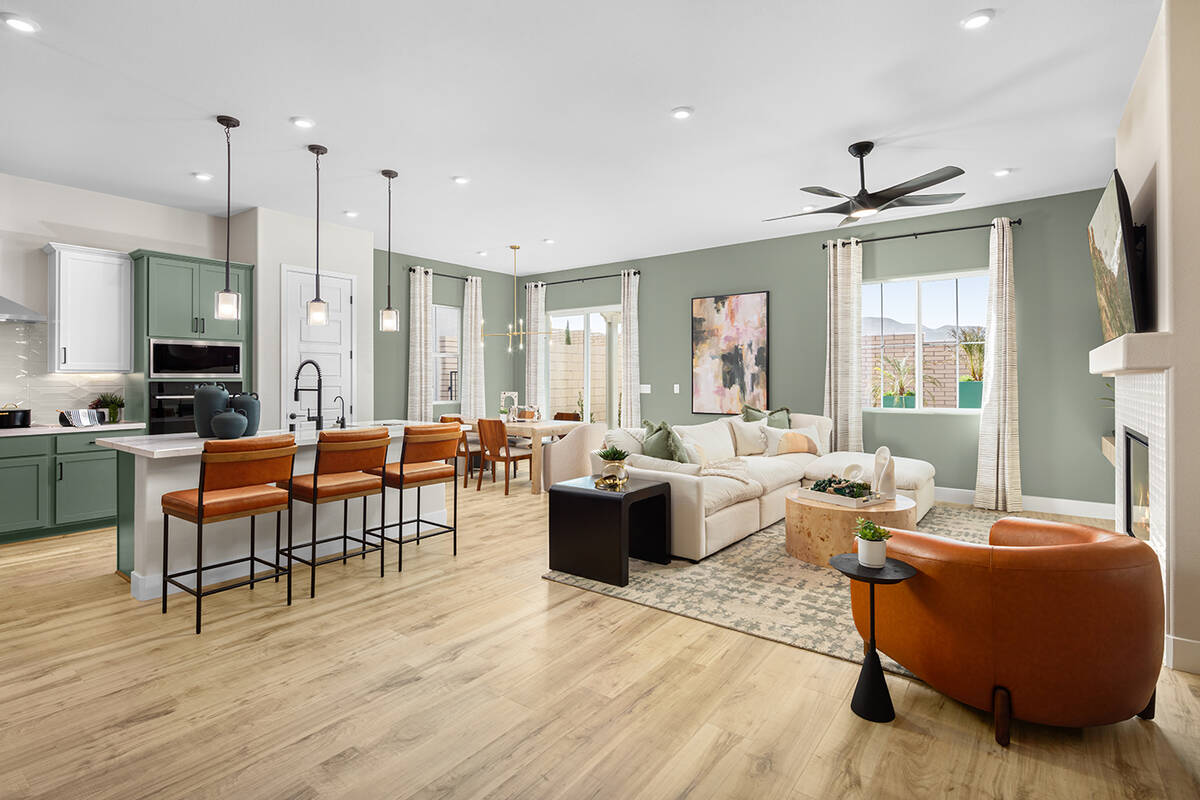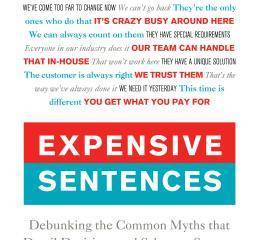The Southern Nevada Home Builders Association kicked off its first 2025 Sustainability Breakfast meeting in March. Members gathered to talk about best practices and lessons learned over the last 25 years to address current problems of extreme temperatures, scarce water resources, a growing population, supply chain disruptions, energy access and land availability.
These problems affect all homebuilders in Southern Nevada, including the luxury market. Custom homebuilders have worked with the National Association of Home Builders, the U.S. Green Builders Council and government agencies to find creative solutions that address these problems.
The breakfast at The Orleans was co-sponsored by KB Home and featured a panel discussion of stakeholders moderated by SNHBA CEO Tina Frias. Speakers included Jeff Pemstein, associate vice president and Western regional government affairs advocate for the National Association of Home Builders; Jacob Atalla, vice president of sustainability at KB Home; Justin Anderson, vice president of construction at Beazer Homes; Annette Bubak, director of business development at Sunnova Energy; Eric Wilson, manager of energy solutions at Southwest Gas; and Adam Grant, director of integrated energy services and energy efficiency at NV Energy.
According to statistics from the U.S. Department of Energy, only 97 homes in Southern Nevada were built to federal Energy Star standards during the early 2000s. Today, more than 140,000 homes in the region meet or exceed those federal standards.
The International Code Council has raised the bar for homebuilders by emphasizing energy efficiency and water conservation through upgrades to building code standards over the last two decades.
New American Home of 2025 at Ascaya
The New American Home of 2025 showcased sustainable building practices from the National Association of Home Builders, the parent organization of the SNHBA chapter, at the NAHB International Builders’ Show held in February.
The two-story luxury home is located within Henderson’s Ascaya community at 7 Stoneshead Court. The New American Home was designed to include five bedrooms, five baths, two powder rooms, pool, spa, casita and underground see-through wine cellar for a total of 9,047 square feet of living space.
Built by Sun West Custom Homes, the $15 million luxury home hosted daily tours. Guides showcased advanced construction techniques for creating a well-insulated building envelope.
Henry’s Blueskin VP100 was employed as an external “peel and stick” wrap that was coupled with the company’s R-Tech closed-cell foam and TPO Membrane. Fi-Foil multilayer reflective wall insulation combined with the other layers of insulation to form an effective air barrier, as well as a water-permeable barrier.
Western Window Systems provided Series 600 sliding glass doors and window/walls that employed insulated glass panes. The sliding glass doors also expanded the indoor living space to the outdoor patio areas upon demand.
Intelligent appliances from LG and Signature Kitchen Suite not only saved water and energy, but also could be controlled remotely by a mobile phone through the Savant smart home automation system and Centriq home management app.
The Savant Power System also allowed for smart power management throughout the home for all the other electrical and natural gas systems, such as the Rinnai Sensei RX tankless water heater, DaVinci custom natural-gas fireplaces, Kohler smart water fixtures, LG Air Conditioning Systems and GE Proseo LED lighting systems.
Despite the size of The New American Home, the RESNET Home Energy Rating System index was evaluated through an energy audit by Two Trails Inc. at a HERS score of 58. That score was 42 percent more efficient compared to a standard code-built home rated at 100.
After adding the Maxeon Home Solar panels to the rooftop of the home, the energy audit for the renewable energy system generated a HERS score of minus-54 compared to a standard reference home of plus-100. The New American Home of 2025 with integrated solar power was 154 percent more efficient than a code-built home because it could generate more power on an annual basis than its residents consumed.
“This was our fourth New American Home and it was by far our best,” said Dan Coletti, owner of Sun West Custom Homes, in a NAHB promotional video. “Because of the view, because of the property, because of the design, because of the materials, because of the collaboration of many different manufacturers, suppliers and contractors, I just feel like we hit it out of the park on this one.”
KB Home focuses on water conservation
“KB Home began its focus on energy efficiency and water conservation during 2000,” Atalla said. “It was easier and less expensive to include water and energy conservation during the initial design and construction of a new home.”
Today, 60 percent of residential homes built by KB Home are in water-stressed environments like Arizona and Southern Nevada. By aligning its building standards with guidelines from the WaterSense program of the U.S. Environmental Protection Agency, the company realized significant cost savings for itself and its customers.
KB Home has installed more than 1.2 million water-efficient fixtures into 26,000 new-construction homes. Smart water plumbing design and WaterSense appliances have enabled homeowners to consume less water when employing landscape irrigation, water heaters, clothes washers, dishwashers, kitchen faucets and bath fixtures.
Atalla calculated that his company’s focus on building WaterSense homes now saves KB Home customers a combined total of 2.1 billion gallons of water each year.
Applications for water rights and permitting for new-home communities are also easier now, when KB Home can show a track record of water conservation through its previous WaterSense homebuilding projects.
VISION House Project by Beazer Homes
Anderson of Beazer Homes touted his company’s goals of developing net-zero energy homes across all of its communities and climate zones nationwide.
During Design and Construction Week, a trade show staged in Las Vegas in February, Beazer Homes partnered with Green Builder Media to develop a VISION House demonstration project.
Three model homes showcased by Beazer within the Cadence community of Henderson were designed to advance a wide range of sustainability solutions at a lower cost, while also providing energy independence and resilience.
The first VISION model home was built with a living space of 1,765 square feet that included three bedrooms and two baths, powered by an average monthly electric utility cost of $52. The NEXUS model had been expanded to 2,191 square-feet of living space with floor plans that included three to four bedrooms and two to three baths. Estimated monthly utility cost of the NEXUS model was $56. The AURORA model contained 2,735 square-feet of living space that included four bedrooms and 3½ baths with an average monthly utility cost estimated at $84.
The AURORA home model’s energy efficiency was measured through the RESNET Home Energy Rating System and indexed with a HERS rating of 16, compared to a typical new production home rating of 73 and an average used-home rating of 130.
Integrated rooftop solar panels ranged from 3.2-kilowatt to 4.8-kilowatt systems, depending on the square footage and rooftop area available. A Tesla Powerwall battery and inverter system can store and distribute 13.5 kilowatt-hours of solar-generated electricity for use by home appliances.
Clean air quality was also a design feature of the VISION House project that incorporated a forced air unit, ceiling fans, energy recovery ventilation system, conditioned ductwork and a double-filtration system to deliver fresh air while also maximizing heating and cooling efficiency. The air quality within the Beazer Homes VISION House projects achieved Indoor AirPlus standards set by the U.S. Environmental Protection Agency.
A soft water loop and water-efficient plumbing system also complied with standards set by the U.S. EPA WaterSense program.
LED lighting was widely distributed throughout each model with lots of embedded spotlights and lighting fixtures in each room.
EnergyStar-certified appliances from Whirlpool, Rheem, Daikin, Proterra and other vendors help minimize daily electric power and water consumption by family members.
During 2020, Beazer Homes established a companywide goal to design and build 100 percent of its production homes in compliance with the U.S. Department of Energy “Zero-Energy-Ready Home” standard. The company plan was to implement these building guidelines across six climate zones within 13 states by the end of the decade.
“We believed Zero-Energy-Ready was another challenge,” said Allan Merrill, CEO of Beazer Homes during a preview of the VISION House. “After internal debate about whether we could get paid for it, we made the leap. The COVID pandemic upended supply chains for two years but we didn’t lose conviction. A commitment to building a better house is fundamental to our company.”
“When you think about energy efficiency, it usually means some kind of sacrifice,” Merrill said. “That’s wrong. We can have nice houses, create a better home and create a better building envelope. It is not a sacrifice for customers to live healthier and be more comfortable.”
Out of 30 national production homebuilders, Beazer Homes was ranked by the RESNET Home Energy Rating System index with the best overall gross HERS rating of 42 across all its housing developments and climate zones during 2024, compared to standard code-built homes rated at 100. The HERS number certification is calculated by an independent energy auditor to compare home energy efficiency across all residential homes.
VISION House Las Vegas, with support from Green Builder Media, showcased the integration of photovoltaic solar panels, battery energy storage systems and smart power management panels during the home’s design and construction process. The final result lowered electricity grid utility costs, increased energy independence and created a more sustainable living environment for families.
“This project is so special, like Caesar crossing the Rubicon river,” said Sara Gutterman, CEO of Green Builder Media, who has been producing demonstration projects like VISION House for two decades. “Beazer’s commitment to building zero-energy homes has raised the bar to all production homebuilders. Through this project, Beazer has shown that high-performance, net-zero homes can be built at scale and at an attainable price point.”












